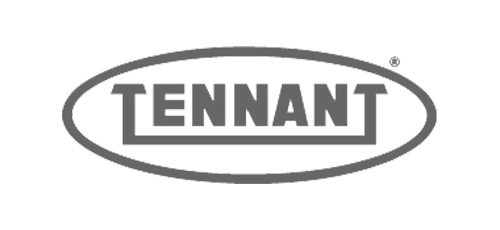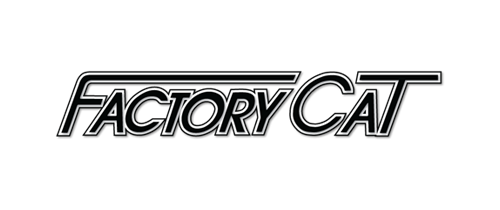
According to the Bureau of Labor Statistics, the transportation, warehousing and utilities industry had about 332,000 job openings in May 2025. Though these businesses hired nearly 290,000 people, they also lost 292,000 workers in the same month, leaving them with even more job openings than they started with. Overall, the total separation rate for the industry was 4%.
If you’re a warehouse owner, operator or manager, you might be concerned about reducing your warehouse turnover rate. Every company has workers who leave their jobs, whether they get promoted, retire, quit or are let go. However, your turnover rate can become a problem if it’s so high that it’s affecting your productivity and profitability. Learn more about why high turnover rates happen and how to retain warehouse employees in this guide.
Understanding Warehouse Turnover
While people leave jobs for many reasons, warehouse turnover is often due to low pay, lack of career growth and harsh working conditions. Poor management can also cause people to quit.
A high warehouse turnover rate can decrease efficiency and morale. It can also be costly since hiring and training new workers is generally more expensive than retaining existing ones.
Comparing your company’s turnover rate to the industry average can help you decide how to improve it. If your company rate is near the average or higher, you might need to go above and beyond to attract and retain workers. It may even be necessary to go back to the basics and review your company’s core practices.
It’s important to understand why your employees are leaving. For example, of the 292,000 workers who left their jobs in May 2025, only 156,000 quit. This means less than half of all separations were because employees chose to leave.
Strategies for Reducing Turnover in Warehouses
While there are many steps you can take to reduce turnover in warehouses, most of them involve improving your employees’ work experience.
Hiring and Onboarding
Decreasing turnover starts with hiring the right people and setting them up for success. First, optimize your candidate sourcing, screening and selection using skills assessments, practical interviewing techniques or employee referrals. If most people who leave are coming from the same source, it’s probably best to stop looking for candidates there. Even if you’re having difficulty filling open positions, you don’t want to hire everyone who applies. Be sure candidates know what to expect from the job and the company.
Continue with a structured onboarding approach after making a job offer. Clear communication about start dates and training schedules can make employees feel excited to work for you and less likely to leave right away, or worse, no-show on their first day. Ensure new employees receive the proper training and have all the tools they need to complete the job successfully.
Competitive Compensation and Benefits
Appropriate compensation and benefits can make warehouse jobs more enticing and keep employees with your company. Be sure you provide competitive wages and a comprehensive, affordable benefits plan that includes health insurance and paid time off. You may also want to offer performance-based incentives to encourage workers to do their best and stick with the company.
Predictable Schedules
Many warehouses schedule workers inconsistently based on their shipping demands. Constantly changing schedules make it difficult for employees to plan for child care, errands or family events. If a changing schedule is necessary, try to give plenty of notice. Consider allowing your workers more flexibility to create their own schedule by offering shift swapping or using self-scheduling tools. Supporting a healthy work-life balance with predictable hours means employees are more likely to stay with your company.
Training and Career Growth
Providing opportunities for career growth or advancement helps workers feel valued. Support career development through cross-training, leadership programs and clear paths to advancement. When you’re invested in your employees as individuals, it’s easier for them to be invested in their careers with your company. Pairing new hires with more experienced employees can make it easier for new people to learn their job and allow longtime workers to gain leadership experience.
Comfortable Environment and Culture
Improving your workers’ physical environment with comfortable temperatures, appropriate lighting, ergonomic workstations and relaxing break areas can also improve morale and help create a positive company culture. Foster a positive culture by encouraging open communication and recognizing people’s achievements. For example, implement an employee of the month program or regular team appreciation events.
When people quit their jobs, conduct exit interviews to assess why they’ve decided to leave and determine if you can take any actions to address their concerns.
Effective Management
Effective management supports a positive company culture. While company culture starts at the top, high-quality middle managers are critical. Remember that many workers leave managers, not jobs. It’s important to train managers to improve their leadership, communication and conflict resolution skills. Managers should be approachable and maintain open communication with their team. As with your other workers, provide ongoing training and support for your managers to continuously hone their leadership skills and encourage retention.
For employees, receiving regular feedback from managers helps them know what they’re doing well and where they have room for growth. They should also feel comfortable providing feedback to their managers, which can help the company make process improvements.
Automation and Robotics
Introducing robotics, advanced material handling equipment and automation reduces manual strain and enhances job satisfaction by reducing repetitive, strenuous tasks. Robotics and other automated solutions can also boost productivity and improve safety.
Robotic trucks and forklifts can increase picking speed and accuracy while making work easier for your employees. Warehouse automation reduces manual work and improves efficiencies, while operator-assist technology helps enhance operator performance. Implementing warehouse robotics can make operations more precise, easily scalable and safer.
Improve Your Warehouse With Burns Industrial Equipment
Warehouse turnover can be a persistent challenge. However, with the right strategies, you can build a more stable, productive workforce.
Burns Industrial Equipment provides exceptional products and customer service, from automated material handling equipment to expert support. We offer ongoing training, maintenance and other services to keep your operations running smoothly. As your partner, we work with you to find the best solution for your warehouse.
Reach out for a custom equipment strategy tailored to your needs.











